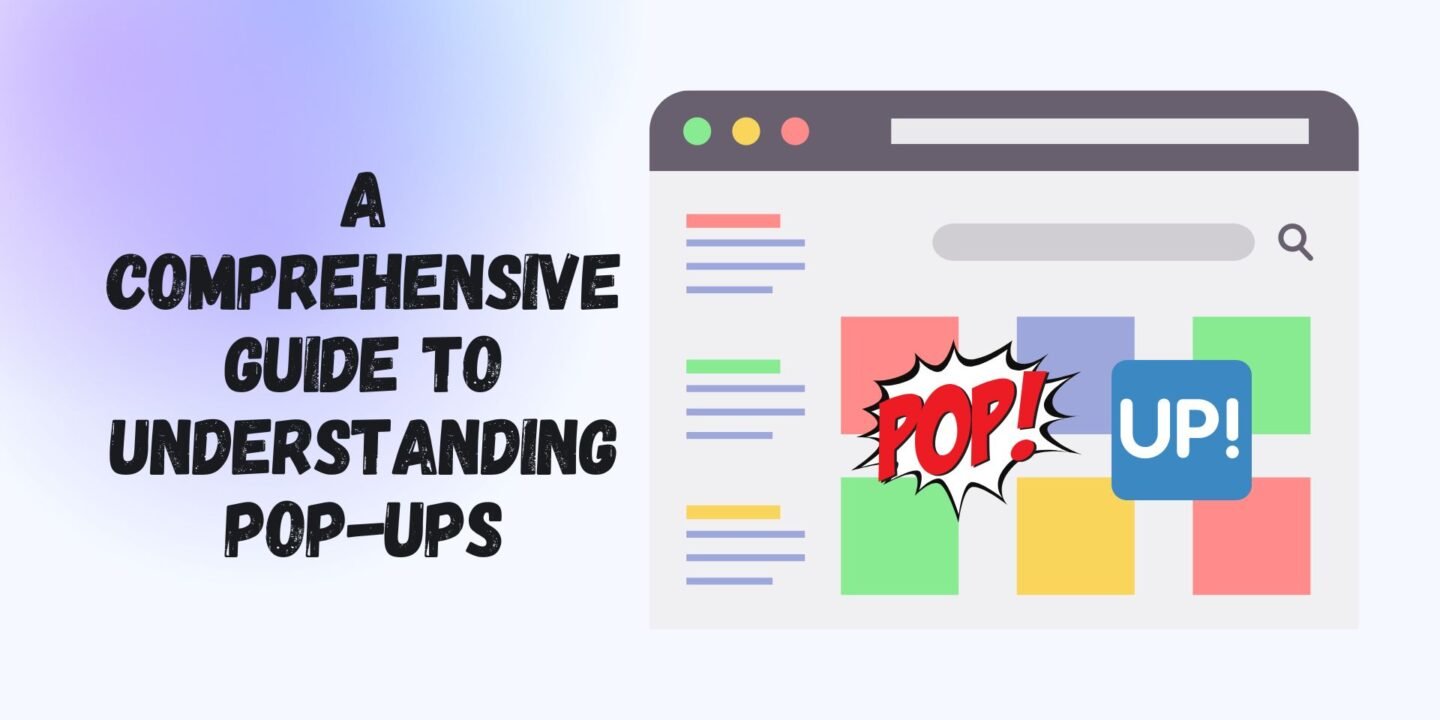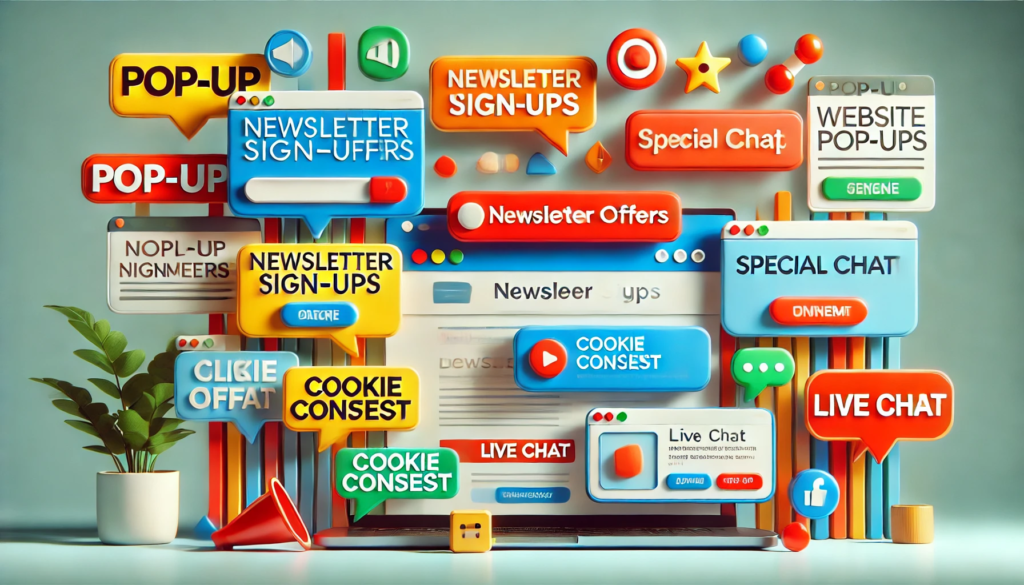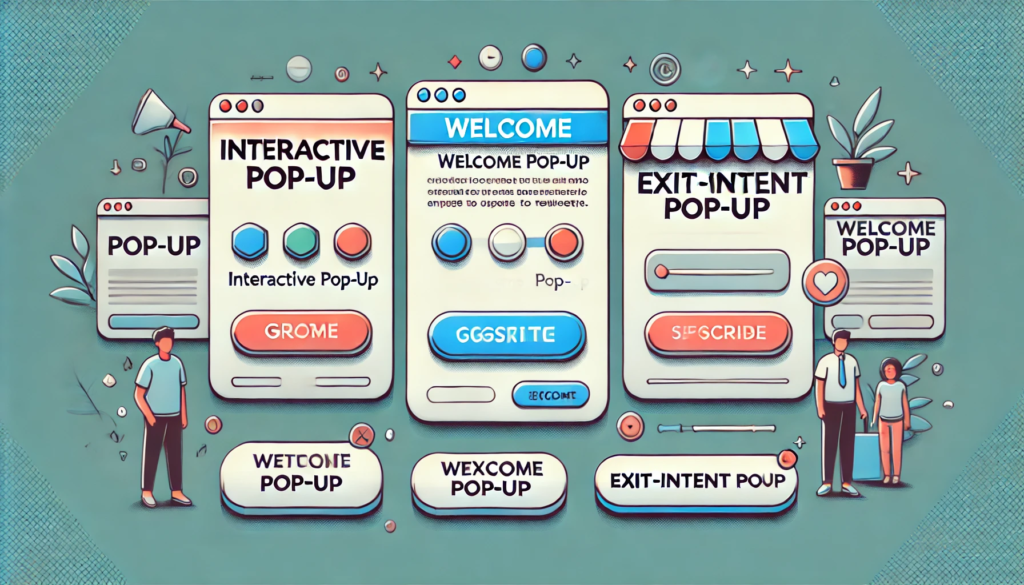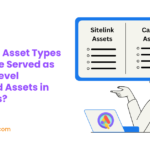
Engaging with users effectively is paramount for businesses. A particularly effective tool in this context is the pop-up.
But what is a pop up? In this article, we will delve into the definition of pop-ups, explore their various uses, discuss best practices for implementing them, and evaluate their advantages and disadvantages. We will also look at examples of effective pop-ups to illustrate their impact.
Definition of Pop-Ups

A pop-up is a graphical user interface (GUI) element, typically a small window, that unexpectedly appears in the foreground of the visual interface. Different user actions can trigger pop-ups or even appear automatically. They capture the user’s attention for various purposes, from information delivery to interactive engagement.
Uses of Pop-Ups
Lead Generation
Pop-ups often capture users’ email addresses or other contact information. This helps businesses build their email lists and nurture potential customers.
User Engagement
Pop-ups can engage users and encourage them to spend more time on a website by offering surveys, quizzes, or interactive content.
Promotions and Discounts
Pop-ups effectively announce special offers, discounts, or limited-time deals, driving immediate action from visitors.
Exit Intent
Pop-ups that appear when a user is about to leave a site can reduce bounce rates and encourage users to stay or take final action.
Best Practices for Using Pop-Ups

Implementing pop-ups effectively requires a strategic approach that considers user experience, design, and relevance. Here are some enhanced best practices to ensure your pop-ups are effective and user-friendly.
Timing and Frequency
Avoid Immediate Pop-Ups
Pop-ups should not be displayed immediately as a user lands on a page. Instead, give users time to engage with the content and understand your site’s value. This approach helps build trust and reduces the likelihood of users perceiving the pop-up as intrusive.
Limit Frequency
It’s crucial to manage the frequency of pop-ups. Showing pop-ups too often can frustrate users and drive them away. Implementing frequency capping can ensure that a user doesn’t see the same pop-up multiple times in a short period. This practice respects the user’s experience and keeps interactions meaningful.
Design and User Experience
Simple and Clear Design
The design of your pop-ups should be clean and focused. Avoid clutter and unnecessary information that can overwhelm users. A minimalistic design with a clear message can capture attention effectively without causing distraction. Use ample white space, readable fonts, and compelling visuals to enhance the appeal.
Easy to Close
Always provide a straightforward way for users to close the pop-up. An easily identifiable ‘close’ button reduces frustration and respects users’ control over their browsing experience. Avoid using deceptive tactics like hiding the close button or making it difficult to find, as this can lead to negative perceptions of your brand.
Relevance and Targeting
Contextual Relevance
Ensure that the content of your pop-ups is contextually relevant to the user’s page. For example, if a user reads a blog post about digital marketing, a pop-up offering a related eBook or newsletter subscription will be more appreciated and likely to convert. Contextual relevance enhances the pop-up’s perceived value.
Targeting Specific Audiences
Use advanced targeting options to show pop-ups to specific segments of your audience. Tailoring pop-up content to different user segments, such as new visitors, returning customers, or users from a particular geographic location, can increase engagement and conversion rates. Tools that offer behavioural targeting can help you display pop-ups based on user actions and preferences, making your interactions more personalised and effective.
Additional Tips
A/B Testing
Regularly perform A/B testing on your pop-ups to determine which designs, messages, and timing strategies are most effective. Using this data-driven method enables you to fine-tune your pop-ups for better performance continuously.
Mobile Responsiveness
Ensure that your pop-ups are mobile-friendly. With many users accessing websites via mobile devices, your pop-ups must be optimised for smaller screens and touch navigation.
Advantages and Disadvantages of Pop-Ups

When used strategically, pop-ups can offer several benefits but also have potential drawbacks.
Advantages of Pop-Ups:
● Increased conversion rates. Pop-ups can significantly boost conversion rates by capturing leads and encouraging immediate action.
● Enhanced user experience. Well-designed pop-ups that provide value can improve the overall user experience.
Disadvantages of Pop-Ups:
● Annoyance factor. Poorly timed or overly frequent pop-ups can annoy and drive users away.
● Impact on website performance. Excessive use of pop-ups can slow down a website, affecting the user experience.
Examples of Effective Pop-Ups

Pop-ups can be highly effective when designed and deployed thoughtfully. Here are some examples of successful pop-up implementations:
Welcome Pop-Up
A well-designed welcome pop-up that offers a discount on the first purchase can effectively capture new leads — this type of pop-up greets visitors upon arrival, providing an immediate incentive to stay and explore. By offering a special discount or an exclusive deal, businesses can entice new users to purchase or sign up for a newsletter, thus enhancing customer acquisition.
Exit-Intent Pop-Up
An exit-intent pop-up triggers when a user is about to leave the website, offering a special deal, or asking for feedback. This type of pop-up can significantly reduce bounce rates by capturing the user’s attention at a critical moment. By presenting an enticing offer or requesting feedback just before the user exits, businesses can encourage visitors to reconsider their decision to leave, potentially converting them into customers or gaining valuable insights into user behaviour.
Interactive Pop-Up
An interactive pop-up, such as one offering a quiz or survey, can engage users and provide valuable insights into their preferences. These pop-ups capture user interest by involving them in a fun or informative activity and gather data that can be used to personalise future interactions. For instance, a quiz can help segment users based on their preferences, while a survey can collect feedback on user experience, aiding in continuous improvement.
Conclusion
When used strategically, pop-ups can be powerful marketing and user engagement tools. By understanding pop-ups and adhering to best practices, businesses can enhance user experience, increase conversions, and effectively communicate promotions. While some potential disadvantages exist, these can be mitigated with thoughtful implementation.








No Comments